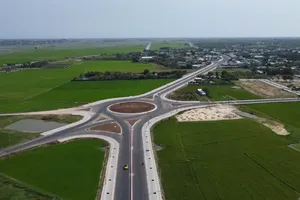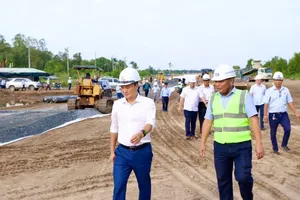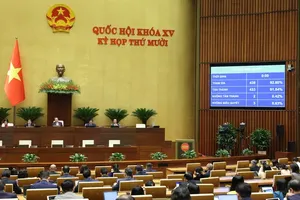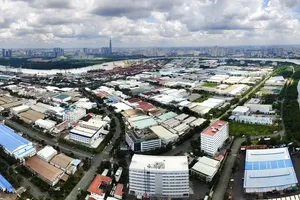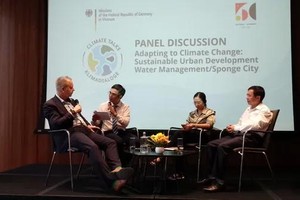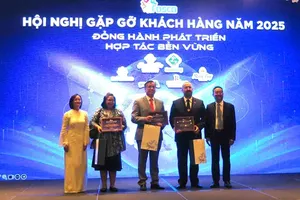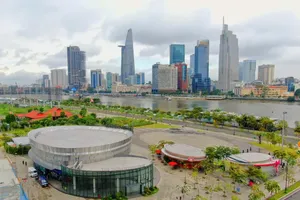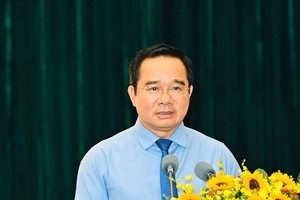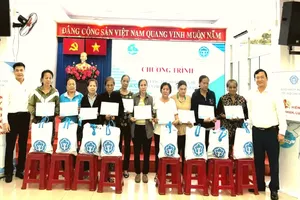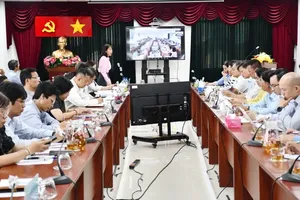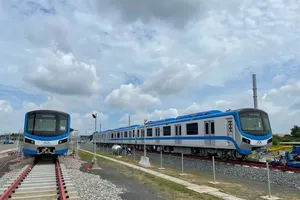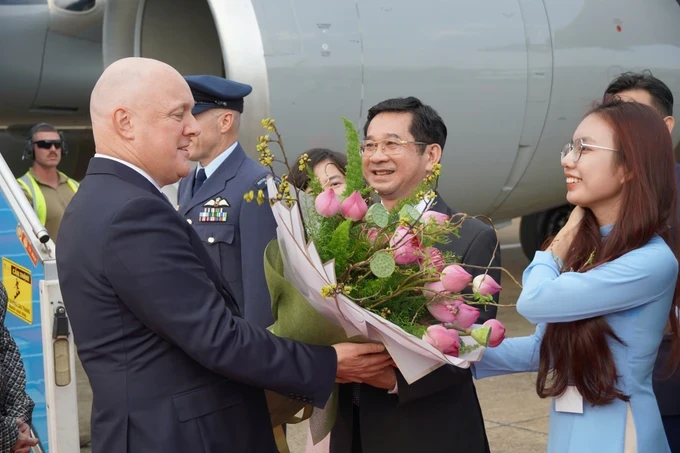
Pioneering path to international connection
Even in its nascent post-war years, as early as 1977, HCMC demonstrated a visionary approach to international relations by establishing the Committee for Solidarity and Friendship with the People of All Countries (under the Vietnam Fatherland Front Committee – HCMC Branch). This initiative served as a welcoming embrace for international delegations, including cherished friends who had stood in solidarity with the Vietnamese people during the arduous years of resistance.
Through direct dialogue, exchanges, and personal connections, HCMC proactively disseminated accurate accounts of the nation’s post-liberation realities. This played a crucial role in dispelling misconceptions and countering the often-skewed narratives propagated by Western media during that era.
Simultaneously, the city wisely cultivated the goodwill and support of international allies at a time when Vietnam faced a protracted policy of encirclement and embargo. These visiting international delegations, witnessing the genuine spirit of the Vietnamese people firsthand, became powerful and credible voices, effectively conveying an image of a righteous, tolerant, peace-loving, and reconstruction-focused Vietnam.
Even before the nationwide Doi Moi (Renovation) period, HCMC exhibited a keen understanding of the strategic role of foreign affairs in the revitalization and growth of its socio-economic landscape. In a bold move in 1985, while the nation still operated under a centrally planned economy, HCMC daringly hosted a delegation of nearly 70 American business leaders eager to explore potential investment opportunities.
That has been considered a groundbreaking move, displaying the city’s innovative, proactive, and “dare-to-think-and-do” approach to foreign policy. Following the 6th National Congress of the Communist Party of Vietnam in 1986, HCMC emerged as a pioneering locality, boldly experimenting with a range of transformative foreign economic policies designed to capitalize on the burgeoning opportunities of integration.
Cradle of normalized relations
HCMC played a pivotal role in projecting an image of a rapidly transforming Vietnam, evolving from the devastation of war towards political stability, social security, and dynamic economic progress.
The city became a significant destination for numerous heads of state and high-ranking international delegations such as the historic 1993 visit of French President François Mitterrand – the first Western head of state to officially visit Vietnam, marking a profound declaration of reconciliation between France and Vietnam; the subsequent visits of French President Jacques Chirac in 1997, of Chinese General Secretary and President Jiang Zemin in 1994, of Cuban President Fidel Castro and German Chancellor Helmut Kohl in 1995. This has greatly contributed to the deepening of bilateral relations between Vietnam and nations across the globe.
Crucially, HCMC served as the very “incubator” for the normalization of relations between Vietnam and the US. Even prior to the formal establishment of diplomatic ties in July 1995, the city proactively fostered economic and educational cooperation initiatives. In March 1994, a mere month after US President Bill Clinton announced the lifting of the trade embargo, the American Chamber of Commerce (AmCham) was established in HCMC with the enthusiastic support of the city administration.
The 1995 partnership between HCMC and San Francisco was a landmark, the first of its kind between US and Vietnamese cities. President Bill Clinton’s 2000 visit, with a large business delegation, highlighted the remarkable transformation in US-Vietnam relations, a testament to the city’s persistent efforts at post-war reconciliation.
HCMC spearheaded progressive policies to attract foreign direct investment, establish export processing zones industrial parks, liberalize trade, and streamline administration. These initial successes addressed local needs and provided a valuable blueprint for Vietnam’s broader economic integration.
The city swiftly attracted investors from key economies like Japan, the Republic of Korea, Singapore, and Taiwan (China), offering attractive incentives such as tax breaks and simplified licensing through a “one-stop shop” model. By doing this, the city has solidified its position as an economic engine and a model for national development through strategic international engagement.
Embracing comprehensive, deep integration
Alongside its impressive economic, cultural, and scientific-technical advancements, HCMC’s foreign affairs have expanded both in scope and depth, aligning with the nation’s comprehensive and deep integration into the regional and global landscape.
From a city once profoundly impacted by war, HCMC has now forged friendly and cooperative relationships with 58 localities across the globe, playing a crucial role in facilitating the sharing of best practices, providing vital technical assistance, and transferring innovative models of modern urban development.
The city also actively participates in multilateral international cooperation mechanisms and serves as a responsible member of numerous global urban networks, including the C40 Cities Climate Leadership Group, the ASEAN Smart Cities Network, the World Urban Forum (WUF), and UNESCO’s Global Network of Learning Cities.
Through these platforms, HCMC not only fosters professional exchange and learns from international experiences in areas such as urban planning, climate change response, and sustainable transportation but also progressively enhances its institutional capacity and urban governance towards modernity, sustainability, and resilience in the face of emerging global challenges.
Building upon this strong foundation and guided by the expertise of its Department of Foreign Affairs, HCMC has formulated its Foreign Affairs Strategy to 2030, with a vision to 2045. This strategy is closely aligned with the city’s socio-economic development objectives, aims to effectively attract international resources, enhances the city’s global standing, and actively contributes to the implementation of the Party’s foreign policy in the current era of deep international integration.
The principle is to place businesses and city dwellers at the center of foreign engagement, while promoting the proactive role of both these key stakeholders. They are both participants in the formulation of policies and strategies and direct implementers of foreign affairs activities, ultimately serving as the beneficiaries of the outcomes of this engagement. As said, HCMC strives for a foreign policy that is substantive, effective, and directly serves the interests of its people and businesses in a peaceful, dynamic, humane, and globally integrated city.
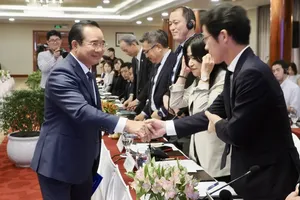
)

